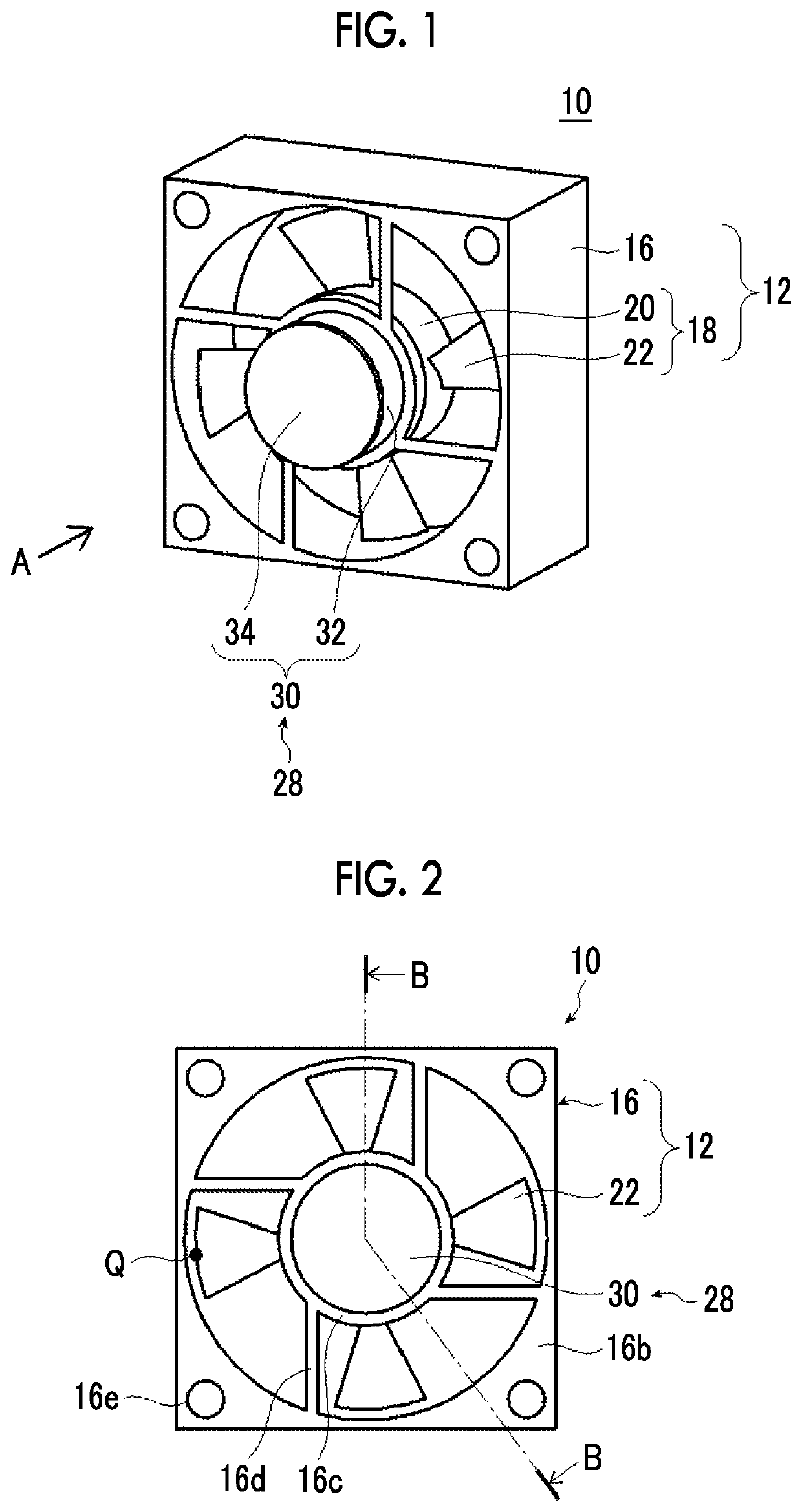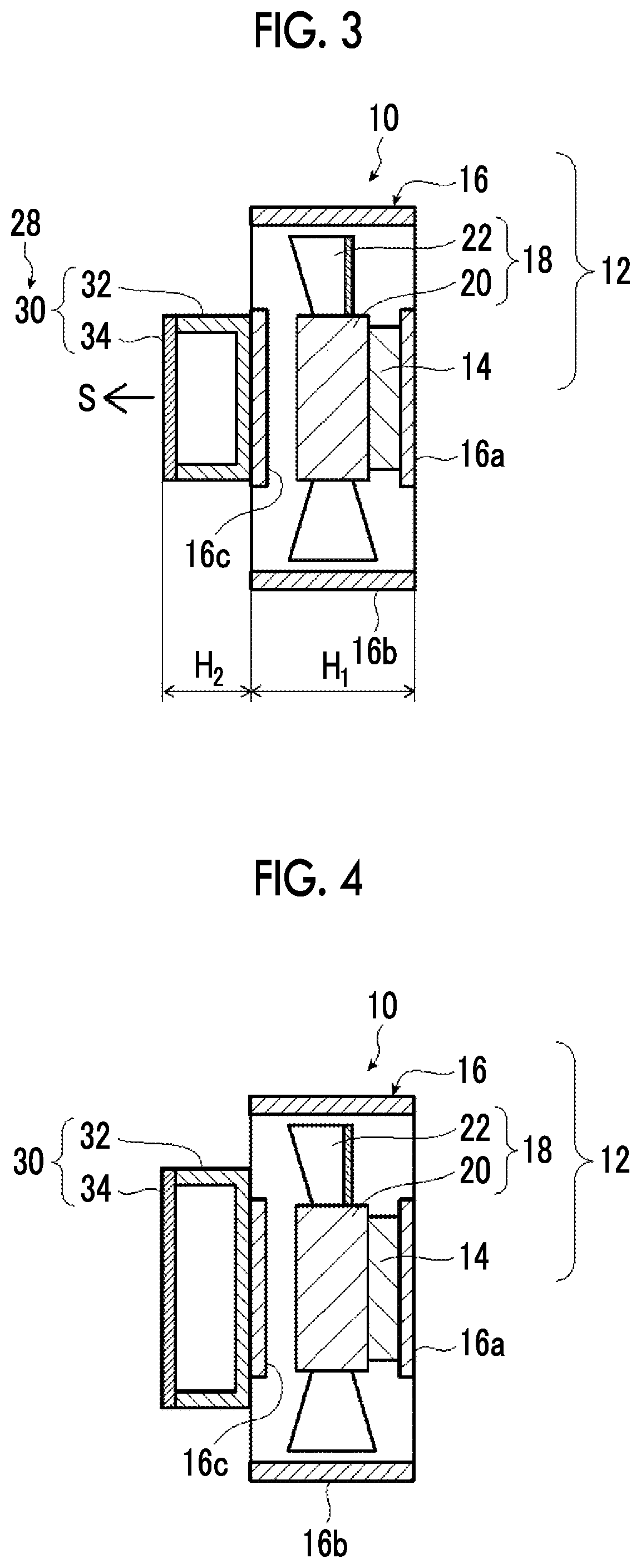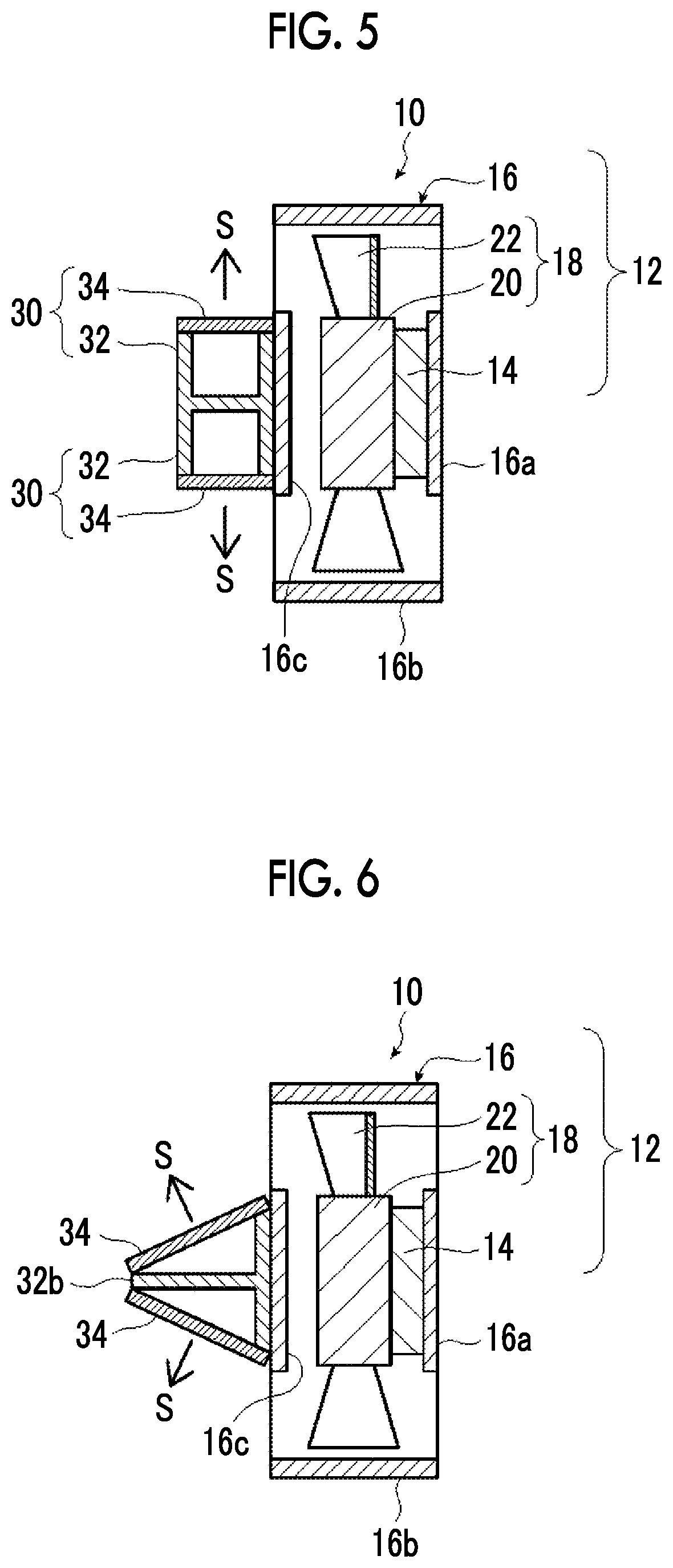Blower with silencer
a technology of silencer and blower, which is applied in the direction of liquid fuel engines, instruments, machines/engines, etc., can solve the problems of increasing the size of the entire device in which the fan and the silencer are installed, and achieve the effect of reducing the siz
- Summary
- Abstract
- Description
- Claims
- Application Information
AI Technical Summary
Benefits of technology
Problems solved by technology
Method used
Image
Examples
example 1
[0213]San Ace 60 (Model: 9GA0612G9001 manufactured by SANYO DENKI CO., LTD.) was used as the axial fan 12. This axial fan has an outer diameter of 60 mm×60 mm and a thickness of 10 mm, a shaft portion having a diameter of 31 mm, and a rotor having an outer diameter (diameter of rotation region) of 56 mm.
[0214]A configuration was adopted in which the silencer includes one Helmholtz resonator 40.
[0215]FIG. 29 is a schematic cross-sectional view of the Helmholtz resonator 40.
[0216]As shown in FIG. 29, a configuration was adopted in which the Helmholtz resonator 40 has an outer diameter of a columnar shape with a diameter of 31 mm and a thickness of 15 mm, an inner space of a columnar shape with a diameter of 26 mm and a thickness of 10 mm, and a through-hole with a diameter of 4.5 mm and a length of 3 mm formed in a center portion of one bottom surface. The Helmholtz resonator 40 was formed by using an acrylic plate.
[0217]The Helmholtz resonator 40 was attached to the cover portion of ...
example 1-2
[0242]Next, in Example 1, a result of a study conducted by changing the length of the duct DU (hereinafter referred to as a duct length) will be described.
[0243]In cases in which the length of the duct DU was 0 cm (that is, without a duct), 3 cm, and 18 cm, the sound pressure intensity was measured in the same manner as described above and the silencing volume was obtained.
[0244]The results are shown in FIG. 33. In addition, FIG. 34 is a graph showing a relationship between the silencing volume and the duct length at 1225 Hz.
[0245]From FIGS. 33 and 34, it was found that the silencing effect of 1.5 dB or more could be obtained regardless of the presence or absence of the duct. In addition, it was found that the silencing volume is increased in a case in which the duct length is 5 cm or more.
example 1-3
[0246]Next, a result of a study conducted by changing only the outer diameter of the silencer (Helmholtz resonator) in Example 1 will be described. Specifically, by changing the outer diameter of the silencer, an area ratio of the region in which the blade region and the silencer overlap with each other to the blade region was changed, and the effect was studied.
[0247]In a case of Example 1, since the diameter of the shaft portion and the diameter of the silencer are the same, the area ratio (hereinafter, also referred to as a shielded area) of the region in which the blade region and the silencer overlap with each other to the blade region was 0%.
[0248]The outer diameter of the silencer was changed to produce the shielded area 7.4%, 24.2%, and 58.3%, respectively, and the air volume was measured in the same manner as in the above. Note that the duct length was 6 cm.
[0249]The results are shown in FIG. 35.
[0250]From FIG. 35, it was found that the air volume was reduced as the shielde...
PUM
 Login to View More
Login to View More Abstract
Description
Claims
Application Information
 Login to View More
Login to View More - R&D
- Intellectual Property
- Life Sciences
- Materials
- Tech Scout
- Unparalleled Data Quality
- Higher Quality Content
- 60% Fewer Hallucinations
Browse by: Latest US Patents, China's latest patents, Technical Efficacy Thesaurus, Application Domain, Technology Topic, Popular Technical Reports.
© 2025 PatSnap. All rights reserved.Legal|Privacy policy|Modern Slavery Act Transparency Statement|Sitemap|About US| Contact US: help@patsnap.com



